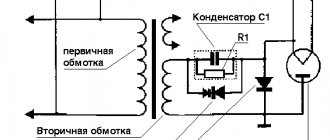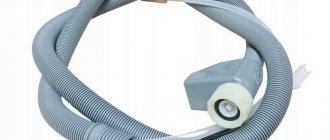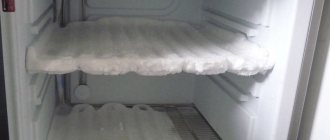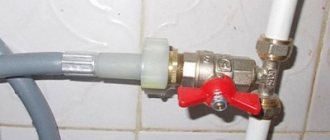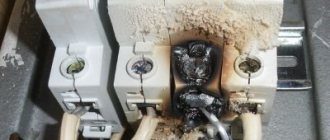The washing machine is noisy during the spin cycle, reasons:
- The transport bolts securing the tank have not been removed;
- The bearings have failed;
- There are foreign objects between the bank and the drum;
- The drum pulley is very weak;
- The tank is not secured properly and a counterweight is created.
First, it is worth conducting an initial diagnosis. You can try this yourself, without involving specialists. Perhaps the problem is entirely in small parts or things that have fallen under the drum.
In order to understand what this or that reason means, you need to understand it more. Let us now examine each problem separately.
Noise due to improper installation
Why is this technique buzzing? If such a “concert” occurs already during the first launch, it is necessary to carry out such a check.
- Check to see if the shipping bolts are unscrewed. Often such confusion occurs among installation beginners who decide to carry it out without the presence of a specialist. Here it will be enough to inspect the device - the notorious bolts are located on the back of the case. Their task is to properly fix the drum when the device is moved to a new home. During installation, the bolts are removed and plastic plugs supplied with the device are installed instead.
- The equipment must be installed on a level and hard floor.
- Be sure to adjust the legs so that the machine does not wobble during operation. It will be enough to turn them in the direction necessary for balance. Anti-vibration stands can be used.
Unscrewing the transport bolts
The transport bolts securing the tank have not been removed
If the drum in the washing machine is noisy and vibrates a lot, the reason for this may be that the fastening transport bolts have not been removed.
In the standard position, the tank is secured with springs for shock absorption, but for safe transportation of the washing machine, the manufacturer additionally secures it with three bolts and secures them well.
After the machine is installed, these bolts must be unscrewed. This mistake is quite common when installing washing machines and is often made by experienced technicians. Before sounding the alarm, you need to calmly understand the problem and start small.
Permissible machine noise standards
Normal noise levels are contained in the instructions, measured in decibels and depend on the type of drive. Most existing washing machines use a belt drive, which produces noise levels ranging from 60 to 72 dB. Since 2005, direct drive units have appeared on the market. This development from LG has a reduced noise threshold of 52–70 dB.
Measuring the noise level without special equipment is, of course, difficult. For ease of perception, you can use a comparison with familiar sounds. For example, the noise of a train in the subway is 95 dB, and the sound of a working hood in the kitchen is about 50–55 dB. In any case, the sound produced by the washing machine should not cause the owner a feeling of discomfort or anxiety.
If you find that the machine makes too much noise when washing, you need to understand the causes of the problem.
The washing machine bearings have failed
They can fail in any washing machine, regardless of its price and brand. This is a completely normal practice and you just need to come to terms with it.
If the washing machine starts to hum precisely because of the bearings, then this problem is very easy to fix.
- First, you need to unplug the washing machine so as not to harm yourself during repairs.
- Then press the drum with your hand and turn it clockwise.
- Then do the same thing, only in the other direction.
If the drum begins to crackle unpleasantly, then the problem is in the bearings.
Most often, the cause of failure lies in the seal bearings. When this unit fails, the washing machine begins to make a lot of noise and knock during the spin cycle, causing a lot of inconvenience to its owners.
In some washing machines the tank is sealed. And therefore it will not be possible to disassemble it to replace the bearings. You will have to endure and eventually come to terms with the fact that it is time to change your device.
How to remove strong noise when operating equipment
Replacing bearings
If the machine begins to make a lot of noise, the fault may be hidden in the bearings. Testing this hypothesis is quite simple - you need to turn the drum manually with the machine turned off. If the process went quietly, then you need to blame other broken parts. If your guesses are confirmed, you need to do the following.
- The front wall is removed (locking screws follow the cuff, the bottom panel and control panel are removed).
- The back wall is removed - you need to carefully unscrew the screws.
- The heating element behind which the engine is located is removed. It will also need to be pulled out, after first moving the belt.
- It is necessary to disconnect the tank, which is attached to the body using springs and shock absorbers.
- How to disassemble the tank? It usually consists of two halves bolted together.
- Worn bearings are knocked out and replaced with new ones.
- Everything goes backwards.
Typically, wear of such parts appears after the aging of the tank seal - it is this part that is responsible for sealing the tank. When moisture seeps in, the bearings begin to rust and wear out quickly.
The process of replacing bearings for different brands is described in more detail in our articles about Samsung, Indesit, Ariston washing machines.
Foreign objects
The equipment can make a loud noise for another trivial reason - there is a foreign object in the drain pump. This is often indicated by the inconsistency of loud sounds heard during washing: they will resemble a crackling sound.
Foreign objects can be understood as bra underwires, coins, buttons and other small metal objects. Removing them will be easy:
- It is necessary to loosen the fastening of the heating element and pull it out.
- Using tweezers, objects caught in the pump are removed from the resulting hole.
- The heating element is put back into place, the rubber seal is lubricated with liquid detergent.
Typically, the drain pump can fail after only five years of using the washing machine, and foreign objects in it will only speed up the process.
By the way, it is not recommended to replace and disassemble the drain pump without the help of a professional. But if the user is determined to do it himself, he will find this video useful:
The cuff is erased
The washing machine hums during the wash itself also because sometimes the sealing collar begins to rub too zealously against the drum. Rubber crumbs on the surface of the door will indicate this moment. You can try to figure out such a misunderstanding yourself (a method that is not always justified by experts):
- A piece of medium or fine sandpaper is fixed on the side of the drum using tape.
- The technique starts in push-up mode. This trick will cause the paper to strip the cuffs at the points of contact with the tank.
- The machine starts rinsing - this will clean the inside of the equipment from rubber dust.
Loose pulley
If the sounds are intermittent clicking sounds, then you may suspect a loose drum pulley. This is not surprising: gradually it can become loose. To prevent the part from freely moving, the loosened bolt is unscrewed and placed on a sealant, which will prevent it from loosening again.
How to secure a drum pulley
The counterweight is broken
The washing machine often makes a lot of noise due to the counterweights. These parts are needed to give stability to the tank during the squeezing process. Sufficient weight of such elements will perfectly balance the tank on both sides. What you need to know about counterweights? The difficulty is that such parts are located in hard-to-reach places. To examine them, you need to help yourself with a flashlight. And manual examination is also expected - after palpation, loose areas are tightened. In any case, if the integrity of the counterweights is compromised, they should be replaced to prevent destruction of the tank.
Worn brushes
The machine hums, but the drum does not turn - here you can suspect worn brushes in the electric motor. The knocking in such cases is usually very loud. It is best to entrust the work associated with this replacement to a specialist. This is due to the fact that the machine will have to be completely disassembled by removing the motor.
The user must understand: noise coming from the machine is a signal of a malfunction. Especially if this hum is abnormal. It is imperative to promptly diagnose and eliminate any problems that arise.
Foreign objects between the tank and drum
This problem is very common and many people face it very often. If your washing machine begins to make a lot of noise during operation, this may indicate that some “left” object has gotten between the tub and the drum.
Which is precisely the cause of this noise. Buttons, small items, etc. - all this can cause a lot of noise and it is not always possible to insure against this. Although turning clothes inside out before washing may help.
It is very easy to fix this problem - you need to loosen the fastenings of the heating element, after which you can remove the foreign object.
To do this, you can use tweezers and other available tools. After removal, it is necessary to return the fasteners to the reverse position, and clean and degrease the rubber gaskets.
Here is a short video with an example of such a malfunction. I think you can handle fixing such a simple problem yourself!
Preventing blockages so that the pump does not make noise
To prevent unnecessary noise from occurring due to foreign objects, prevention is needed. You don’t have to do anything supernatural, just follow the basic rules for using the machine:
- soften water with special means;
- clean SMA parts from scale;
- Clean the filter after every 5th wash (or at least once a month);
- sort clothes, check pockets.
We hope you now know what to do to stop your washing machine from making noise anymore. If you still have questions, you will find comprehensive answers to them in the video:
Drum pulley is very weak
If even in free-running mode the drum begins to rotate, and during stable operation the machine makes a lot of noise, this may indicate that the drum pulley is very weakened.
This does not mean that the machine is being used incorrectly. The pulley fails for obvious reasons - the washing machine has been in use for a long time.
The problem could be a loose screw or nut. Once you have found a loose screw or nut, you need to tighten it and then use sealant for maximum effect.
Loose Counterweight
The counterweight is a very simple device in the washing machine that can be the cause of the noise. Actually, this is a piece of concrete installed inside the washing machine. Its task is to dampen the inertia that arises during the rotation of the drum. Despite its apparent simplicity, it can become loose and, instead of calming the vibration of the car, bother its owner with creaks and noise.
The counterweight is easy to access - you just need to remove the top cover. Often, during operation, the mounting holes break, and the concrete block begins to “walk”, making a loud noise. If the counterweight moves freely, but the bolts cannot hold it because the holes are larger than the bolt heads, the counterweight will have to be replaced.
The tank is not secured properly and a counterweight is created.
It is the counterweight that is responsible for ensuring that the tank is well fixed in the washing machine. It is secured with ordinary screws, which may simply loosen over time.
This causes increased noise. It is possible to determine that the fastenings are loose by visual inspection. To do this, you just need to remove the cover of the machine.
If after the screws were tightened the machine stopped making noise, then that was the reason. If this does not help and the noise when the machine operates continues, then this may indicate more serious problems that are best dealt with by a specialist.
You may be interested in another of our articles about malfunctions of household appliances - why the washing machine does not work.
Hatch cuff defect
Some may find it strange that the cuff of a washing machine can become a source of suspicious noises, but nevertheless, it is so. The purpose of the cuff is to prevent water from pouring into the gap between the body and the hatch during operation. If the cuff is installed correctly and the material from which it is made has not lost its elasticity, a small gap remains between it and the rotating parts. The cuff is not in contact with the drum. If it is distorted, the situation changes. The edges of the cuff go inward, preventing the normal rotation of the drum, thereby causing noise.
It is worth noting that such a malfunction, which creates an unpleasant noise, is more often found in inexpensive devices from little-known manufacturers; washing machines from LG, Samsung, Indezit and other world brands are free from this drawback.
If abrasions are visible on the cuff, this is the reason. You can correct the situation in the following way:
- open the hatch, turn the drum by hand;
- determine the part that clings to the cuff;
- stick a piece of fine sandpaper on the drum;
- run the washing machine in spin mode.
As the drum rotates, the sandpaper will remove excess rubber and friction should stop. Of course, this method will only work if the size of the protruding edge of the cuff does not exceed a few millimeters. Otherwise, the cuff will have to be replaced.
If the cuff is in order and the noise does not stop, you need to move on to checking other parts of the washing machine. Further actions involve disassembling the machine, completely or partially. Before getting down to business, you need to soberly assess your capabilities, and in case of the slightest doubt, contact specialists.
...and silent spin
However, the greatest trouble is caused by the spin cycle. And in order to effectively combat noise in this mode of operation of the washing machine, you need to be able to defeat vibration.
How to do it? It is very important how the tank suspension is organized and how well it dampens vibrations. And if the variety of springs in cars of different brands is not very large, then shock absorbers often differ. The difference in their cost can be quite large, but this is a price to pay for comfort, mostly acoustic. And many are willing to pay.
But the most important thing, of course, is the body. This is the main resonator of all noise from the internal components of the machine. And therefore, if it is not cruel enough or has not very strong connections somewhere, the noise will increase many times over. Look at the side of your washing machine. Small vertical recesses are a simple but effective way to reduce vibration in the sidewall, making it more rigid. It is also important not to skimp on trifles, to use a sufficient number of screws, for example, to fasten the side and rear walls. Almost all leading manufacturers (BOSCH, Electrolux, Miele) try to make the case as rigid as possible. By the way, there are also examples of unsuccessful design decisions. At one time, one of the leading manufacturers had the case back cover attached only to the sides with screws, and simply fit into a groove at the bottom. As a result, there was a constant hum when the pump was running and water was recirculating. Although the pump itself worked quite quietly. The issue was resolved simply: the company took into account the comments and made modifications by attaching additional screws to the bottom of the case. The hum is gone.
The Asko company solves the problem of body vibration and noise differently. The designers of this company separated the vibrating tank and the housing. In essence, it turns out to be a machine standing inside a housing, independent of the washing unit. Unlike the classical design, when the washing unit hangs on the body and accordingly transfers all vibrations and loads to the body, here this entire structure is hidden in the outer casing and is not connected to it. Vibration is practically not transmitted to the body. And if this body is covered with noise-absorbing mats from the inside, then the noise level can also be reduced. But all these are additional costs...
Note, by the way, that the narrower the washing machine, the more difficult it is to organize effective suppression of vibration and noise, since reducing the size leads to a decrease in its weight, and as a result the machine becomes more susceptible to vibrations. This is another reason - quite a significant one - to prefer a full-sized washing machine, if possible.
One of the new tricks in the fight against noise is a plastic tank. It resonates much less than metal.
Belt and other little things...
It is a common belief that the main cause of noise is the belt. This is not entirely true. When washing you can't hear it at all. During the spin cycle, a squeak from the belt may be noticeable at maximum speed. So far, only one company has proposed eliminating this source of sound - LG, by mounting the motor virtually directly on the axis of the drum. The result is that the squeak from the belt has disappeared. True, all other noises - from vibration, operation of the pump, brushes, water filling - remained.
You can often hear about bearing noise. Everything is simple here. A serviceable bearing operates silently. If the bearing can be heard rotating, it needs to be replaced quickly. If this is not done, it will soon simply fall apart.
As for the pump, which is “responsible” for filling, circulating during washing and draining water, then, as a rule, it does not make much noise. The water itself creates more noise.
The lock of the laundry loading hatch is broken or not closed
One of the main protections for new generation washing machines is the lock on the door hatch. If it does not fit tightly or closes without a characteristic click, water will not be poured into the unit and the washing program will not start. Make sure the door is tightly closed. To do this, open and close it again. Start the washing program again.
In some cases, the door may not lock, and the corresponding error icon will light up on the electronic display. This means that your lock is broken: the problem is in the locking tongue or latch located inside the body of the machine itself. Open it and look carefully: perhaps the rod that serves as a fastener for the latch has fallen out of the tongue on the door. It can be inserted by carefully disassembling the hatch. A mechanically broken lock and damaged door will need replacement.
If the door is not closed tightly, the machine will not draw water.
With frequent and long-term use, the hinges in the washing machine hatch that connect it to the washing machine body may become loose. This will cause the door to latch tightly. You can screw the hinges with your own hands using a screwdriver.
Serve a silent wash
As you can see, there are plenty of reasons for noise to occur. That is why only a small number of industry leaders are able to effectively combat it. The difference between expensive and cheaper models most often consists of a huge number of little things that, superimposed on one another, ultimately ensure comfortable use of the washing machine. After all, you see, today we have the right to demand from a washing machine significantly more than just washing clothes.
Let's start with the fact that leading manufacturers in top models have already learned how to make the wash cycle truly silent. We have already listed above the manufacturers who use “advanced” motors. During the wash cycle in these models, you will only hear the splashing of water and waddling laundry. Truly silent washing, and this is already a reality.
Clogged or broken inlet valve filter
Everything is in order with the water supply in the house, the device is working and connected correctly, but water still does not flow into the machine, and the process is accompanied by a characteristic hum? The reason may be more serious - the water supply valve is clogged or completely broken.
Water enters the washing device under pressure from the water supply. Its supply is regulated by a special plastic valve, which receives a signal from the control module. If the valve is broken, the washing machine cannot draw water. It must be replaced using the services of a service center.
Washing machine inlet valve
The cause of the malfunction may be another - the filter on the inlet valve is clogged. This problem can be solved without calling a service technician. To clean the filter with your own hands you need to:
- Unscrew the water supply hose from the machine.
- Remove the strainer using pliers.
- Clean it of small debris and rinse under water pressure.
- Install everything in place in the same sequence.
- Check the device for functionality.
Attention! It is not enough to clean just the filter. There may also be a blockage in the supply hose. It is also recommended to rinse it well under running hot water.
Tips and tricks to avoid this problem
When choosing spare parts, it is best to purchase original ones, since they may differ in size. In addition, non-original parts may be of lower quality.
This video explains in detail the causes of noise and methods for repairing a washing machine.
By following simple tips, you can fix the problem yourself, but if you don’t know how to repair washing machines, then it’s best to contact a specialized service center (in addition, the warranty on the device is often quite long, 2-5 years). Otherwise, you can make the situation even worse.
Bad bearings
If the washing machine rattles in any operating mode, even after cleaning the sump, then most likely the problem is in the bearings. Most often they wear out due to wear of the oil seal on the tank of the machine. Water leaks through it, causing the bearings to quickly rust. Typically, the hum intensifies during the spin cycle, when the drum picks up speed and accordingly rotates faster.
To confirm the malfunction, just twist the drum in different directions. If the movement is smooth and without extraneous sounds, then the problem is something else. But if the drum rotates unevenly and is accompanied by a grinding noise, then the bearings need to be changed.
If damage to the bearings is caused by a worn oil seal, then there will be smudges of rusty water on the back wall of the washing machine tank. They can be seen if you remove the back cover of the machine. In this case, you need to change both the oil seal and the bearings at the same time, otherwise after a short time you will again hear that the washing machine is humming during operation or when it picks up speed.
Remember! Failure to pay attention to the fact that the washing machine is noisy and its continued use with unusable bearings can lead to damage to the shaft and more expensive repairs.


